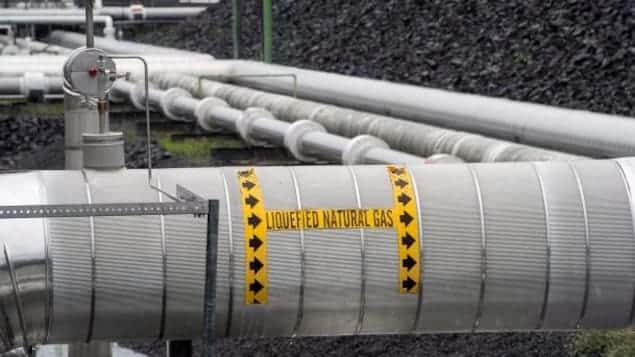The end of isolation
Before the advent of liquefied natural gas, the natural gas market was very insular, explains Pierre-Olivier Pineau, holder of the Chair in Energy Sector Management at HEC Montréal. Trade was mainly between Canada and the United States because of transportation difficulties.
Given the large reserves in Canada, supply easily exceeded demand. The natural gas benchmark price called Henry Hub has fluctuated between US$1.50 and US$4 since 2008.
Russia’s invasion of Ukraine and sanctions on Russia’s oil and gas industry helped turn the tables, says Jackie Forrest, CEO ofARC Energy Research Institute.
Since 2016, the United States has gone from importer of natural gas to exporter. About 10% of North American production is for export, but that proportion will double by 2030, according to Forrest.
If we didn’t have the situation [en Europe]I don’t think we would expect so much growth in exports [de GNL]
she points out.
At the end of May, the company VentureGlobal gave the green light to the construction of a second liquefied natural gas export terminal in the Gulf of Mexico. A project of 13.2 billion US dollars. This month, Cheniere Energy nearly doubled its liquefied natural gas production capacity.
A North American price linked to the European price
But opening the market to European demand has consequences for the price in North America.
Being able to export more means that production and consumption markets are linked and that more and more there is future harmonization in prices
explains Joseph Doucet, the dean of the College of Social Sciences and Humanities at the University of Alberta.
And European prices are much higher than American prices.
From the moment a North American producer has the choice of selling at a lower price in North America or at a higher price in Europe, he will prefer to sell at a higher price. There is a part of the supply that is diverted to Europe and this creates a certain scarcity of resources in North America and this scarcity of resources leads to a rise in prices
confirms Pierre-Olivier Pineau.
” It is certain that there will be a structural upward trend in prices with this globalization of the market. »
Jackie Forrest estimates that in the long term, the price of natural gas will fluctuate in a range between US$4 and US$9. We had a decade of low prices which was atypical. We are returning to much more normal energy prices
she believes.
If the news can despair consumers who see their bills increase, Joseph Doucet like Pierre-Olivier Pineau note that liquefied natural gas infrastructures require several years of construction. The structural rise in prices will therefore be gradual, according to them.
It will also benefit gas producers and therefore the coffers of the producing provinces, underlines Mr. Doucet.
Dissenting opinion
However, not all experts share this assessment of the situation. Instead, director of energy research at Wood Mackenzie Dulles Wang expects lower prices for consumers over the next three years.
Even if we export more liquefied natural gas, I don’t think price volatility will be as high. We have a very large market for natural gas and the vast majority of this gas will still be consumed in North America
he explains.
He also forecasts an increase in natural gas production, which he predicts should balance the long-term price of natural gas at around US$3 to US$4.
Reference-ici.radio-canada.ca
